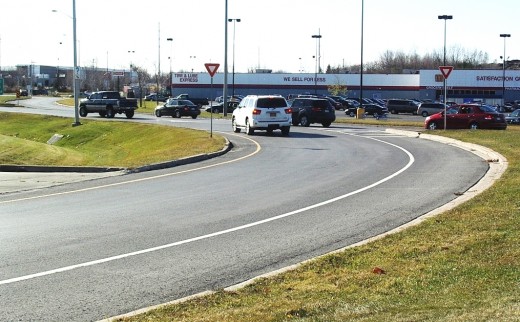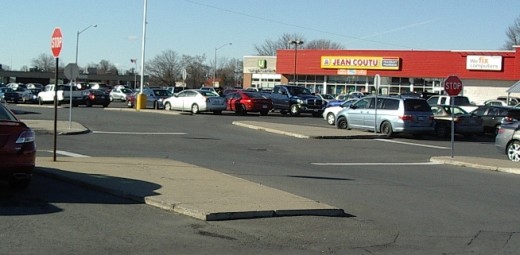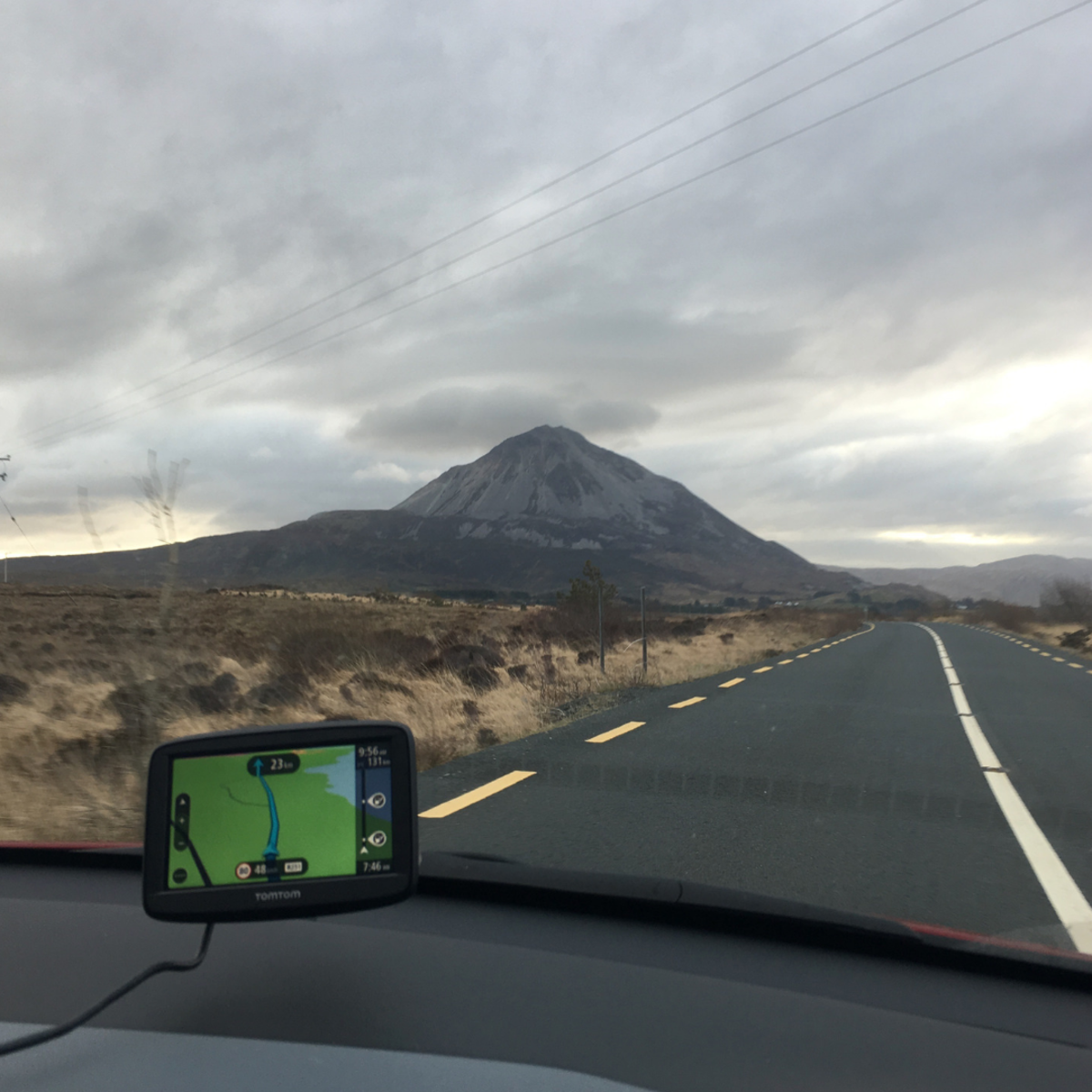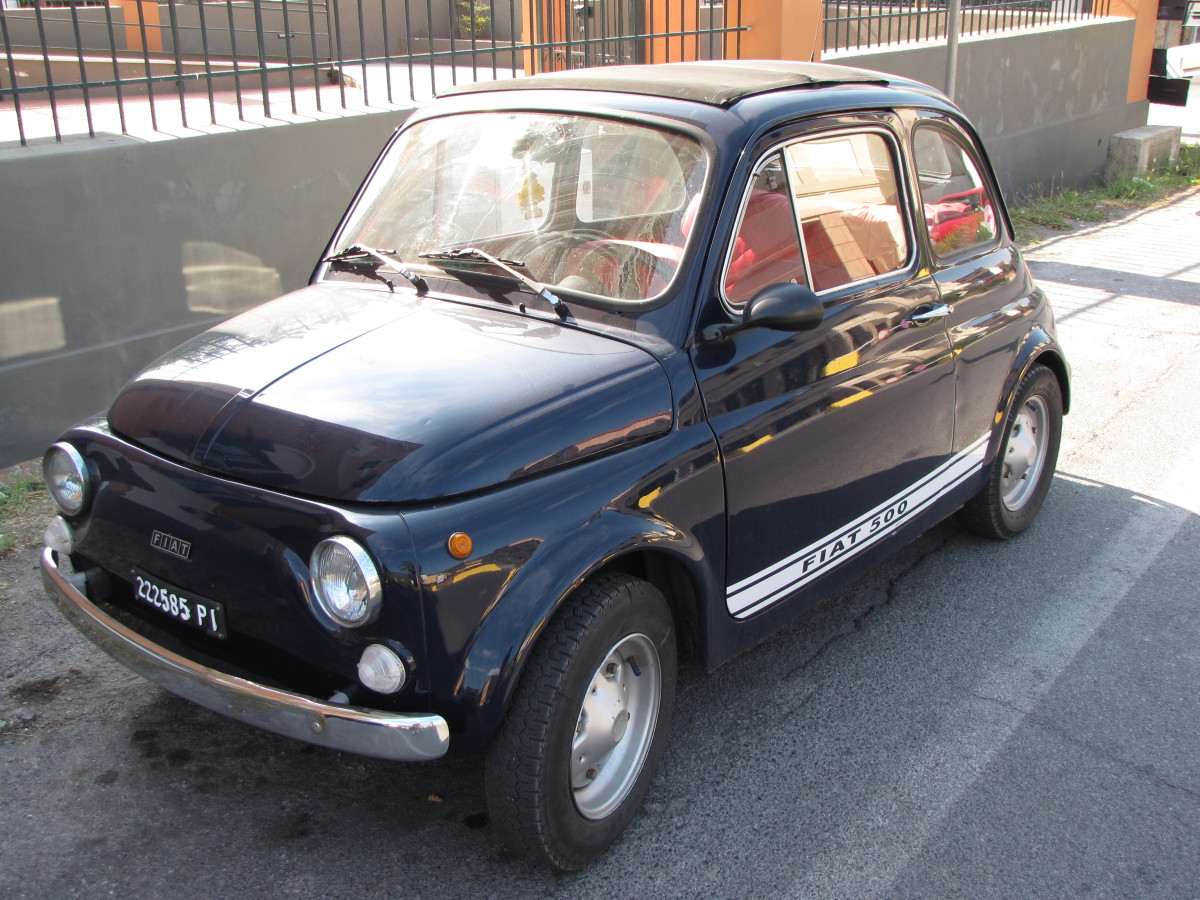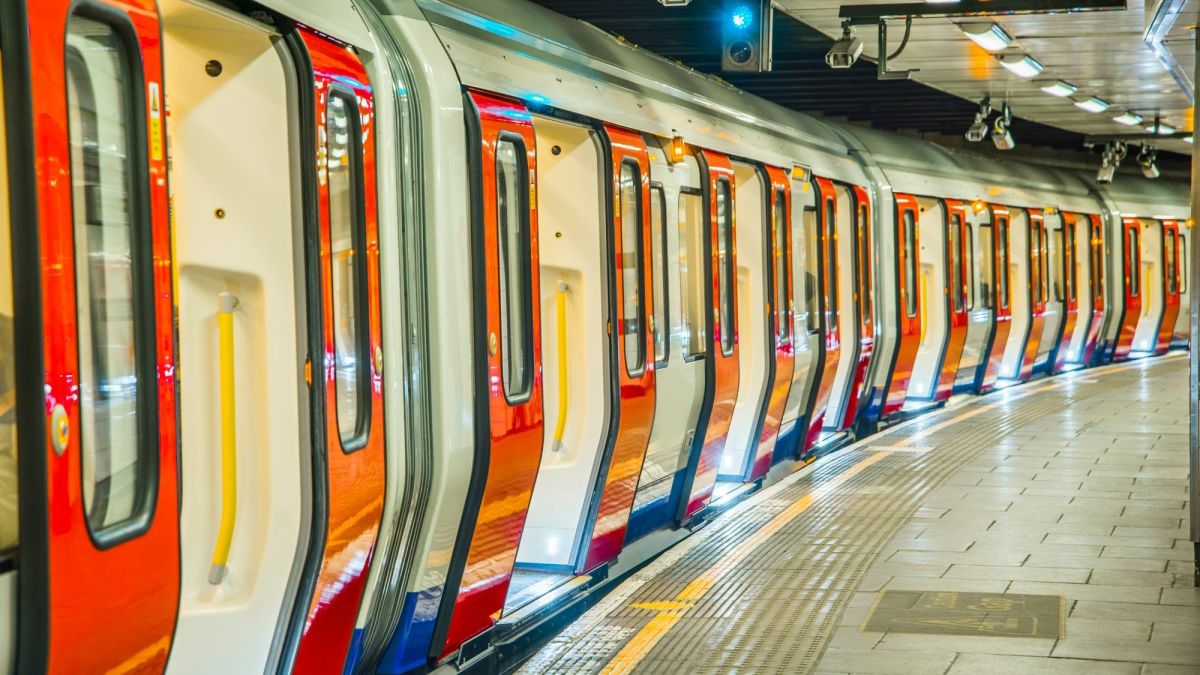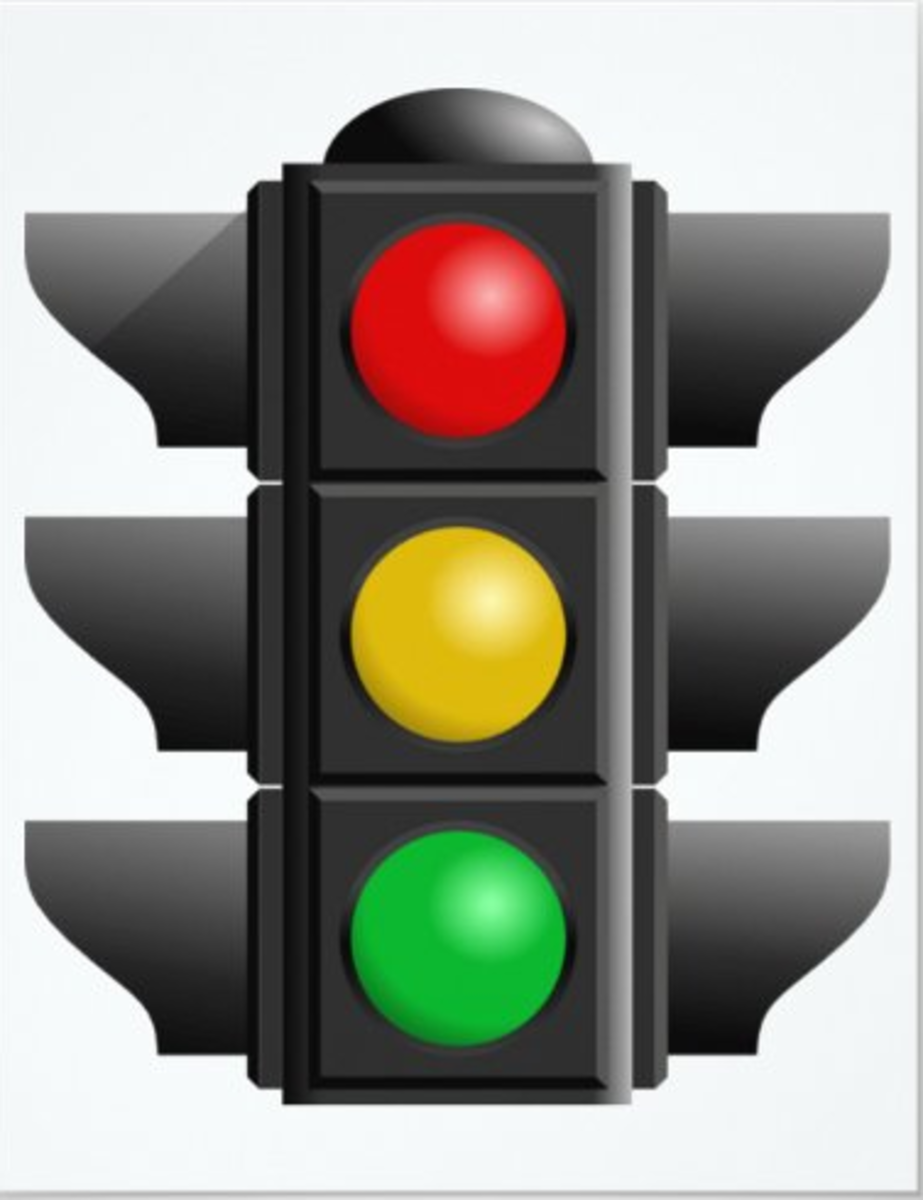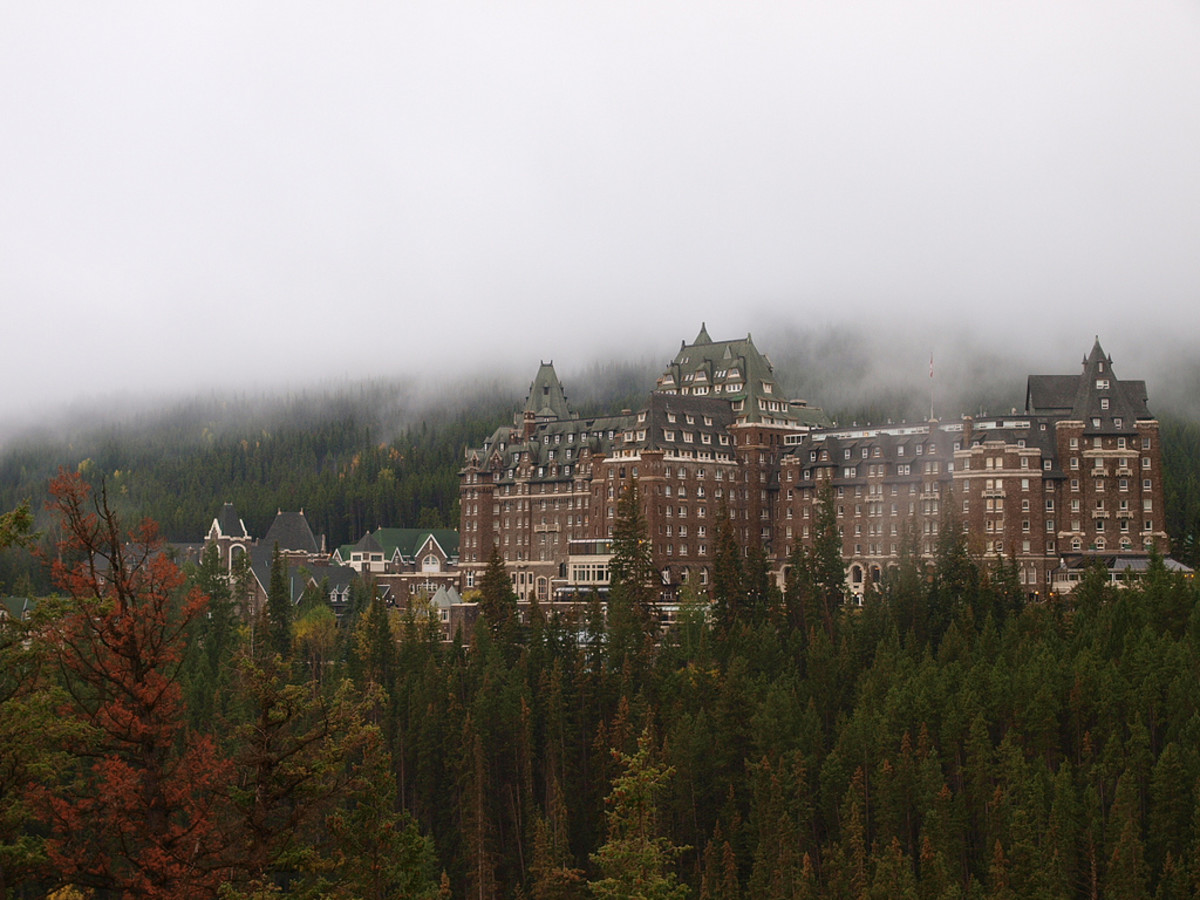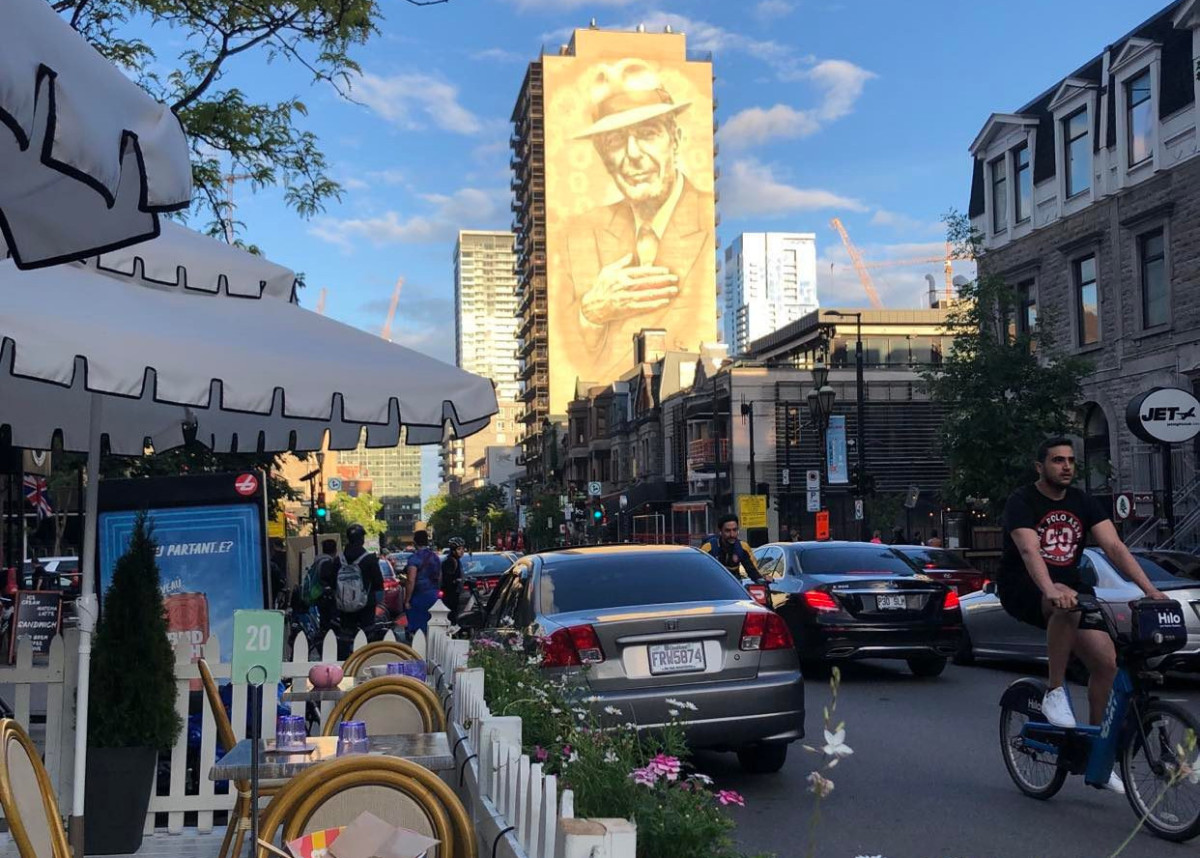Drive in Canada the Right Way - minus Mini-Roundabouts
Beware if you are British..
...and love mini-roundabouts. If you’ve never driven further than Land’s End or John O’Groat’s, prepare yourself for surprises the first time you drive in Canada; and I don’t mean the differences you already know about. Every driver knows that a boot is a trunk and a bonnet is a hood and that Canadians drive in kilometers instead of miles.
The biggest problems you will have to begin with are the differences between Pavements, Sidewalks, and Roads.
Roads are pavements. OK?
Pavements are Sidewalks. Got it?
(It is quite startling the first few times you hear another driver talking of driving down the pavement.)
Oh! I nearly forgot – Canadians drive on the right, just like the Americans; as both countries have the longest undefended border in the world and roads and bridges that connect, it would be difficult to swap sides halfway across the border, although it must be said that the bridge between right-hand-drive China and left-hand drive Hong Kong does manage to swap sides. Sensibly enough, most Canadian built cars have adjustable speedometers; as you cross the border to the States all you have to do is press a switch and it reads in miles instead of kilometres.
N.B. A reader and commenter, 'Innerspin', has kindly informed me that petrol/gas is now sold in the UK in litres; so that's something you don't need to worry about if you're visiting from the UK - unless you pop across to the USA for a visit, that is.
Learner Drivers
If you decide that you want to learn how to drive after you immigrate to Canada, you’ll be pleased to learn that you won’t need to display those huge red ‘L’ plates on your car.
Canadian novice drivers only need to display an ‘N’ on the back window.
If you already have a British licence, you will still need to sit a Canadian driving test. The test is similar to the British test with the same manoeuvres included, but it also covers freeways. It doesn’t matter whether you sit your test in an automatic or manual car; when you pass you are allowed to drive either type. United Kingdom driving is more stressful than Canadian driving, so you should have no problem passing the test. (A note of explanation here; by Canadian I am referring to Ontarian driving tests only, but as Ontario is 8 times larger than Britain I think you’ll understand.)
Road Markings
The other most obvious road marking differences are the central lines which are yellow. The road edges are marked with white lines. This can be extremely dangerous when you are turning left (remember we are talking about driving on the right) from a side road onto a larger road at a very wide intersection. As you negotiate the junction you will obviously look to the left to see where you should be turning.
The first few times you do this will be the most dangerous as you turn into the junction and then realise that you are about to drive to the right hand side of a yellow line. In the UK, yellow lines delineate the edges of some roads, and it seems that you are about to drive off the edge of the road. Your natural reaction will be to swerve back to the left so that the yellow line is on your right hand side – and the traffic is coming straight towards you – oops! A terrified scream from your passenger and a quick snap of the wheel will make this survivable.
Traffic Lights
Traffic lights are iffy, and not just because of the ‘turn right on red’ rule. As long as you have stopped first, turning right on a red traffic light is allowed, but it so, so, easy to forget that you intended to turn right. Believe me I know, I’ve done it myself. I’ve driven up to a set of lights with a programmed route in mind, intending to turn right to go to the shopping mall or the gym, and just as I arrive at the lights I consider that I can kill two birds with one journey. When I’m here I can go to see my dippy old Aunt Biddy and get that irritating job out of my hair – and I drive straight through the lights. If nearby drivers are alert this too, is survivable, but I wouldn’t push my luck if I were you.
There is an odd twist to the 'turn right on red' rule. If you are driving on a one way street and approach a set of lights on another one way street, you are allowed to 'turn left on red'.
Another reason for the traffic lights being iffy is the pedestrian light system attached to the lights. If your lights are on green, pedestrians are allowed to cross the side streets, and they have signals to let them know when to start to cross. The signals also tell them, in big script, how long they have to cross, and it is done in a countdown style.
The only snag is that the pedestrian countdown can be seen by the drivers on the main green light main road, and it lets them know how long they have before the lights turn red. It doesn’t matter at first if the pedestrians have a countdown of 30 seconds but when it gets down to 5 seconds, the race begins. The cars on either side of you begin to accelerate and when you look in the mirror you can see that the following car has taken the expression tailgating a bit too seriously as he/she tries to push you forward so that they won’t be the one that has to stop. Even as you drive through the ‘just turned red and no more, officer’ stage you know that your tailgater is coming through – as has his tailgater. All very dodgy stuff.
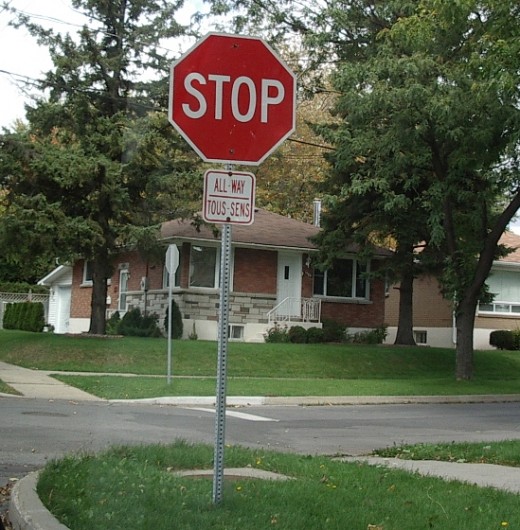
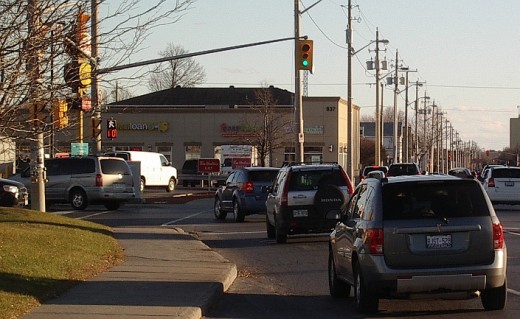
2 or 4 Way Junctions
Canada loves its 2-ways and 4-ways, almost as much as it loves its STOP signs. In the local grocery store car park there are 15 STOP signs. Naturally no drivers actually stop, they are treated like ‘Give Way’ signs or ‘Yields’ as they are known in Canada. It isn’t like the UK where the car has to supposedly be stopped and the handbrake applied, and all that nonsense; for a start the handbrake is known as an emergency brake here, and is completely unnecessary in an automatic car – unless the footbrake fails, that is. Most Canadian drivers consider the emergency brake to be an irritating waste of space which gets in the way of their coffee cup.
Think of a crossroads with either two Stop signs – one on each opposing road - or the same crossroads with a Stop sign on all four roads. The 2-ways and all-ways work on a first-come first-served basis. (According to the Department of Transport you should give way to the vehicle on the right, but I’ve seen no evidence of that rule actually working). Whoever gets there first –or thinks they have – has right of way over every other car no matter from which direction it is coming. If you ever get bored with the endless repeats on television – anytime between May and September - arm yourself with a tub of popcorn and a lawn chair before ambling along to your local Hesitation Crossroads . You can almost hear the drivers’ brains working overtime as they try to work out if it is their turn to move, but the most fun comes when the brain overloads and they think, ‘Screw this, I’m going anyway.’
When the driver hasn’t a clue whether they are approaching a 2-way or a 4-way is the most fascinating. Have they missed a sign? Was there a sign? The urgency in their twisting and turning as they look behind them to see if they’ve missed a sign ensures that they at least do some gymnastics, and the panic makes certain that they get some cardio. Not only that, the entertainment level goes up a notch or two.
Roundabouts/Traffic Circles/Rotaries
When you negotiate your first Canadian roundabout, be prepared for a shock; the vehicles on the roundabout do NOT have right of way. The reason for this is because your seeming roundabout is actually a ‘Traffic Circle.’
What’s the difference?
I can do no better than quote the Department of Transport’s explanation…. ‘some traffic circles operate according to the traditional � yield-to-the-right � rule, with circulating traffic yielding to entering traffic.’
Have a look at the photograph below; it might help you to understand this. Notice where the ‘yield’ signs are? When have you ever seen a so called roundabout where the traffic approaching the roundabout has right of way and the vehicles on the roundabout have to give way to them? Trust me, gridlock doesn’t take long.
Canada, or at least Ontario, has few roundabouts, hence the proliferation of 4-way stop signs. This fact can be mind-numbing at first after coming from a nation of roundabouts and gyratory systems, especially if you are from a ‘new’ town, but you will soon be celebrating the absence of mini-roundabouts. The photograph below shows you a 4-way Stop sign in a car park – the 4-way is Canada’s answer to the mini-roundabout. Notice how tall the STOP signs are, and then consider how small the keep-left signs are at UK style mini-roundabouts.
The STOP signs are set at that height so that they can be seen by the snowplough driver. Mini-roundabouts are a No-No in Canada due to the fact that in winter the first snow plough would pulverise the keep-left signs and gouge the mini into oblivion. (It is for the same – snowplough - reason that rumble strips at the edges of freeways aren’t raised up above the road surface, but chiselled down into the tarmac.)
Ontario’s Official Driver’s Handbook describes roundabouts as the Brits know them, and to be strictly accurate, there are 12 roundabouts in Canada’s capital city, Ottawa. The last roundabout that I’m aware of was opened in November 2010, and cost $2.5 million, and was installed in that particular junction because there had been 65 crashes at the junction in the previous three years.
The new roundabout was described as being a modern European Style Interchange. The city, aware that roundabouts were foreign to most drivers,went to a great deal of trouble to advertise that vehicles on the roundabout have right of way , and that approaching vehicles should not enter the roundabout until there is a safe gap in the traffic.
Speed Limits
The speed limit in towns is usually 50kph – with a reduction to 40kph near schools. In rural roads the limit is 60kph and on Freeways (Motorways) it can be 100kph. Don’t get too excited about the 100kph for the motorways, it’s only 62mph. Even 120 kph is only 70mph. Last week two young men near here were caught doing 128kph on a freeway. There was much gasping and shaking of heads at such dizzying speeds on public roads, but I shake my head for a different reason – what’s appalling about 80miles per hour?
You might find the speed limits boring at first after being used to driving on British motorways quite casually at 20 miles per hour over the 70mph limit, but you’ll soon revel in the slower pace of life.
Distances
The most profound differences are the distances involved in any journey and the Canadians’ casual acceptance of it. Believe it or not, Canada is wider east/west than the USA is deep north/south. Driving 20 miles for a takeaway coffee and doughnut is an accepted occurrence, and that’s only one way. That’s the equivalent of driving from the River Forth on the east coast of Scotland to the River Clyde on the west coast of Scotland– the same route as the Antonine Wall. Hey! is it possible that the Antonine Wall wasn't built to keep the heathen Picts back, but intended opening a Tim Hortons franchise at each end?
When you take your car for a service, don’t describe parts of your car as being ‘offside’ or ‘nearside’. You will get nothing but a blank look. The descriptions you are looking for are ‘drivers’ side and ‘passengers’ side. Another small difference is Canadians not understanding headlight flashing. You know how it is in the UK – when someone overtakes you on the motorway, you flash them twice to tell them it’s safe to come back in. Double flashes are normally OK but a single long flash or multi speed flashes mean something naughty
There is one difference that isn’t quaint so much as lethal; some cars do not have rear indicator lights that are amber. They have red rear indicators. This is not much fun if you are behind a driver who is pumping his brakes and……perhaps signalling??
Safe Driving.
